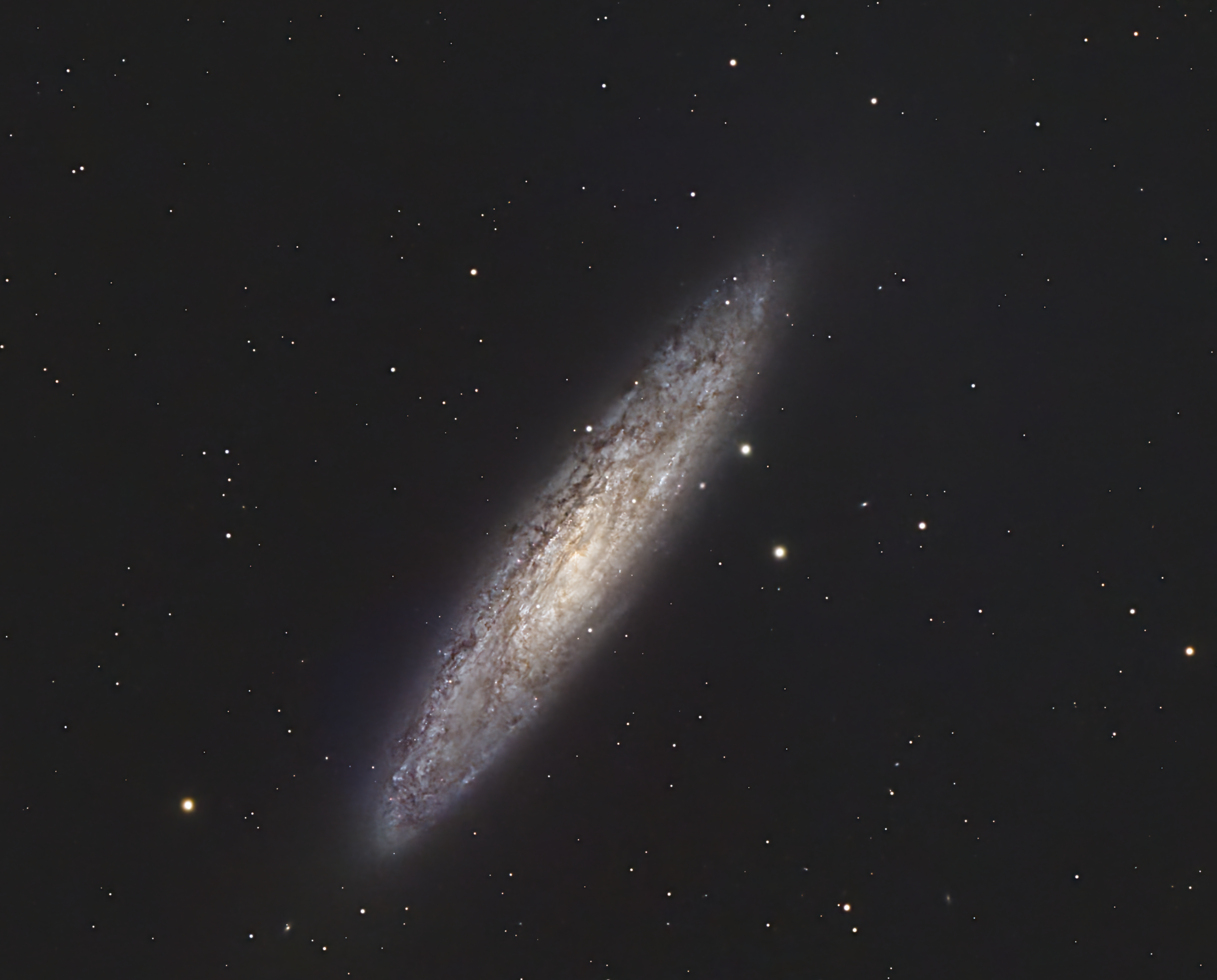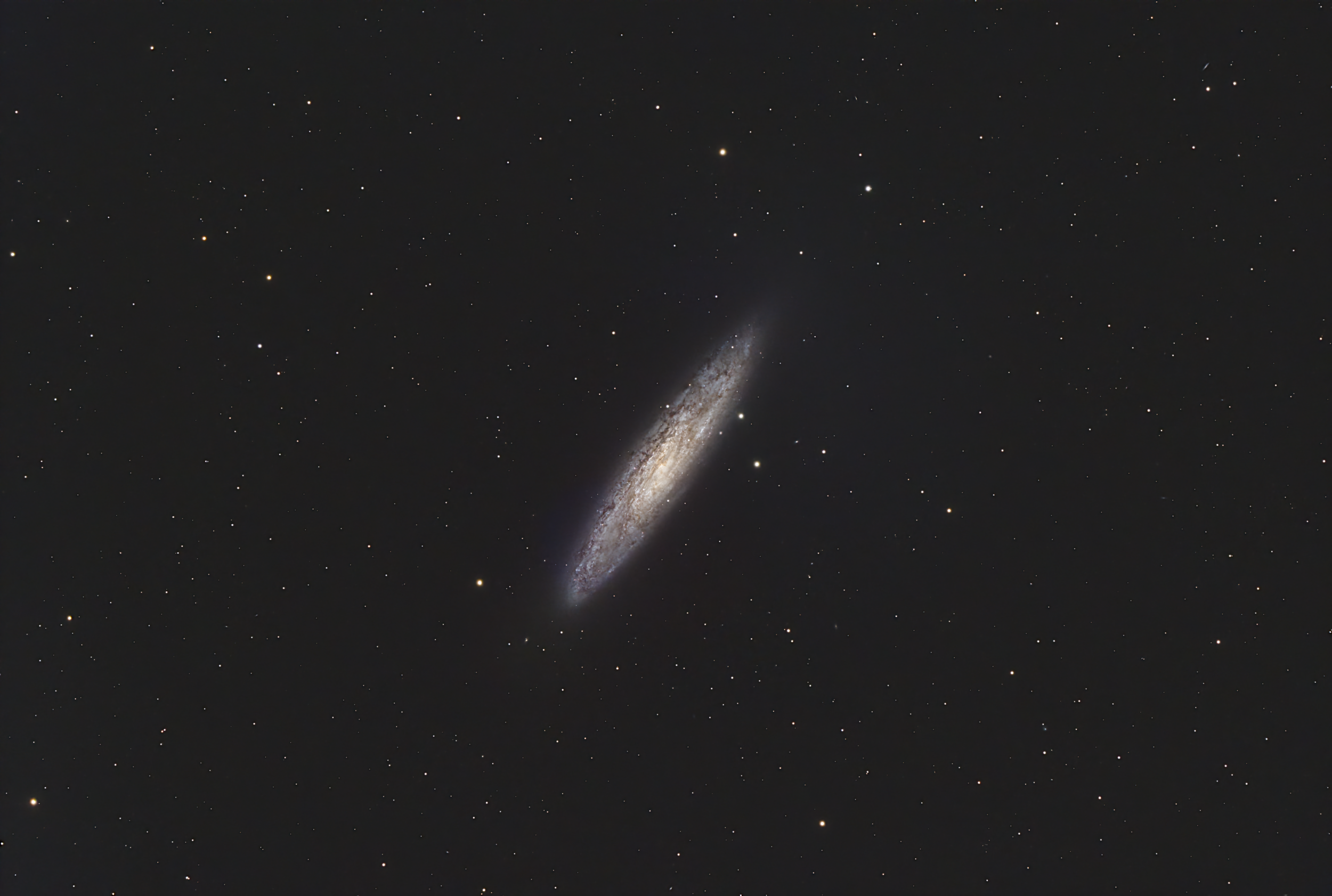

Wikipedia Description:
The Sculptor Galaxy (also known as the Silver Coin Galaxy, Silver Dollar Galaxy, NGC 253, or Caldwell 65) is an intermediate spiral galaxy in the constellation Sculptor. The Sculptor Galaxy is a starburst galaxy, which means that it is currently undergoing a period of intense star formation.
Observational history
The galaxy was discovered by Caroline Herschel in 1783 during one of her systematic comet searches.[4][5] About half a century later, John Herschel observed it using his 18-inch metallic mirror reflector at the Cape of Good Hope.[5] He wrote: “very bright and large (24′ in length); a superb object…. Its light is somewhat streaky, but I see no stars in it except 4 large and one very small one, and these seem not to belong to it, there being many near…”[5]
In 1961, Allan Sandage wrote in the Hubble Atlas of Galaxies that the Sculptor Galaxy is “the prototype example of a special subgroup of Sc systems….photographic images of galaxies of the group are dominated by the dust pattern. Dust lanes and patches of great complexity are scattered throughout the surface. Spiral arms are often difficult to trace…. The arms are defined as much by the dust as by the spiral pattern.”[6] Bernard Y. Mills, working out of Sydney, discovered that the Sculptor Galaxy is also a fairly strong radio source.[5]
In 1998, the Hubble Space Telescope took a detailed image of NGC 253.[7]
Acquisition Details:
| Telescope | Takahashi TSA-120 |
| Optics | None |
| Filter | IDAS NB12 Dual Band Filter |
| Camera | ASI2600MC Pro OSC |
| Integration Time | 3.3 Hours |
| Subframes | 66 X 180 seconds |
| Date | October 22, 2024 |
| Location | Carlsbad, California |